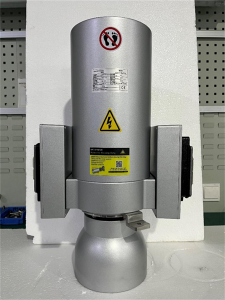Electric Slip Ring MTF19042456
Maintaining the surface condition of slip rings
1. Regular cleaning: Thoroughly remove carbon powder and dust from the ring surface, insulating components, and brush holders using dry, clean compressed air or specialised vacuum equipment. Blow from the carbon brush holder towards the slip ring to prevent carbon powder ingress. Avoid using cloths prone to shedding fibres or organic solvents (unless specifically permitted). This constitutes the most critical daily maintenance task!
2. Surface Treatment: Minor oxidation or contamination may be addressed by gently polishing with fine-grit sandpaper (e.g., metallographic paper) along the direction of slip ring rotation to remove the oxide layer. Immediately clean thoroughly with compressed air and a clean cotton cloth after polishing. Severe damage (grooves, burn marks) requires lathe repair on specialised machinery (ensuring concentricity and surface finish) or replacement.
3. Coating Application: Consider applying hard chrome, silver plating, or high-performance wear-resistant conductive coatings (e.g., certain ceramic-metal composite coatings) to the copper ring surface to enhance wear resistance and corrosion protection.

Design Improvements and Upgrades
Adopting Fibre-Optic Slip Rings: For signal transmission components, fibre-optic slip rings should be used wherever possible to replace conventional electrical slip rings, thereby avoiding electrical contact issues.
Consideration of Brushless Excitation Systems: For generator rotor excitation, an increasing number of new-generation units adopt brushless excitation systems (rotary rectifiers), eliminating excitation slip rings and brushes entirely.
Modular Design: Facilitates disassembly, maintenance, and replacement.
Condition Monitoring System: Integrates brush wear monitoring, temperature monitoring, vibration monitoring, insulation monitoring, and other functions to enable predictive maintenance.

The reliability of wind turbine slip rings hinges upon high-quality design and manufacturing, correct selection and installation, scientifically sound maintenance practices, and effective control of the operating environment.













